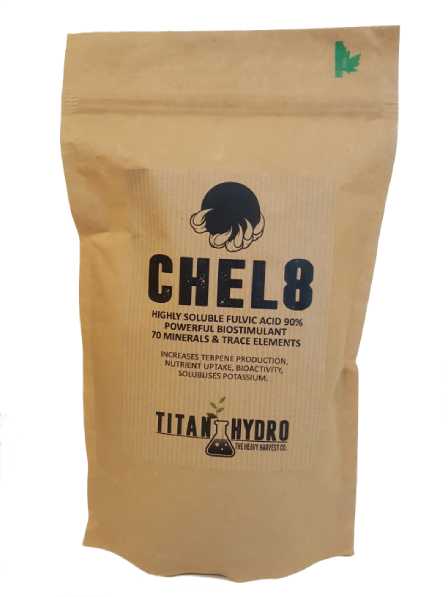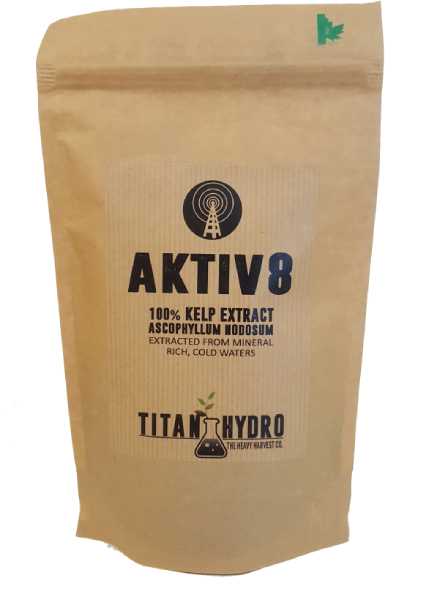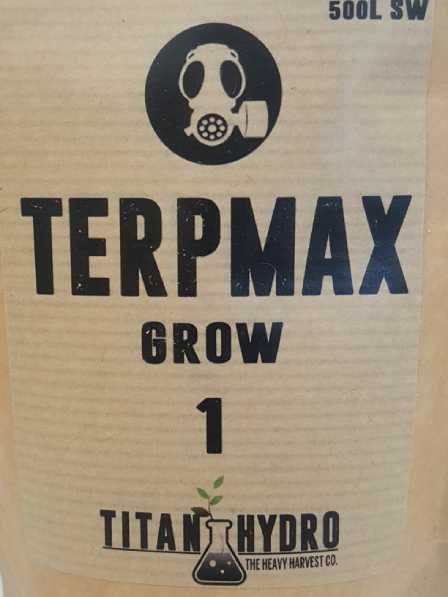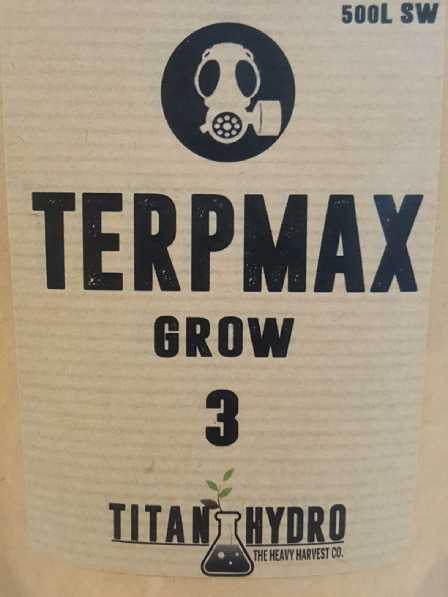Titan Hydro products are forged in cutting-edge hydroponic science delivered by the world’s most advanced commercial hydroponic specialists.
Combining 20 years in indoor growing with 9 years of pioneering R&D, Titan Hydro’s range is purpose built for the most professional growers seeking optimal yields and quality.
Why?
In early 2017 we realised that we could use our many years of experience and expertise in cultivation and designing highly complex and advanced hydroponic powder feeds to deliver a step-change in indoor growing; improving the yield to cost ratio and enhancing quality traits whilst making it more 'green'.
How?
We set about the development of an innovative, market leading nutrient feed range, scouring the globe for the finest ingredients. We then started with small scale summer trials, moving into a series of larger scale trials through the winter, spring and the following summer. This has allowed us to understand the performance of a host of different varieties in varying growing conditions and optimise the product range for broad application.
What?
We have optimised a range of:
- easy-to-use powder feeds - both quick and simple in application - combining base feeds for vegetative and flowering stages (hard and soft water)
- exceptionally potent powdered biostimulants (Humic Acid, Fulvic Acid and Kelp)
- highly effective powdered PK and Cal Mag boosts
This is a high purity, premium quality advanced product range whilst being still uncomplicated and easy to use. It has delivered exceptional yield results in both gross weight and terpene content, hence the name TERPMAX!
R&D is continuous in the Titan Labs and we will soon be releasing more products - see 'Future' for more information.
The Science of High Yield Crops, flavonoids and Terpenes
When plants are grown in the field, their root growth is unlimited, as they require more nutrition to develop new growth they simply go and find it, if it is in good soil the plant wont need to spend much energy to produce more roots in order to find fresh nutrient rich soil but if the root mass is limited such as with pot culture we must ensure our feed supplies everything needed to avoid deficiencies and stunted growth or blooms.
Growing in hydroponics is the art of delivering all the nutrients needed in an oxygenated liquid solution to a much smaller root mass. Soil contains not only minerals but amino acids and humates which increases nutrient availability and stabilise root zone pH levels and drive complex plant functions that determine the aroma and taste of certain crops. You can achieve huge yields in field grown crops but you need to grow very large plants to achieve this, we can create the same or even higher yields in hydroponics because we can control ideal pH range and oxygen levels which increases nutrient uptake considerably, when your plants don't need to use energy to hunt for fresh food, they use it for production of flowers and fruit, heavy in aromatic compounds and essential plant oils.
Custom NPK Ratios
The Titan team have experience in both agriculture and hydroponic cultivation. Our understanding of various crops needs has helped us formulate a feed that supplies your crop with the perfect ratio of minerals to drive growth and bloom in high light environments, ensuring your plants develop strong stems to support heavy blooms. TerpmAX is a full spectrum bloom feed ideal for the entire flowering stage of your crop. with maybe the addition of CalMag and PEAK during heavy fruit set. If you want to see your crop at its peak you should be using biostimulants alongside your usual feed regime. Humic and Fulvic acids are very effective additions to any nutrient solution, adding them creates and organic claw around each mineral salt in solution, which passes through the root much faster and adds a rich source of trace minerals, combined with the addition of Kelp which is natures own plant steroid, super charging whatever stage of production your plants may be in. bigger roots, stronger turgid foliage, thick strong stems and copious amounts of fragrant blooms.
We have created a perfect balance between the minerals medicinal plants need for each stage of production, our in house agronomist has extensive experience in formulating the correct ratio between certain minerals to ensure full flavonoid production, we are currently developing our Pro line of additives with a custom TerpMaX recipe for even more choice how to supercharge your blooms.
Calcium, Magnesium Complex

To enable total control over your nutrient solution during peak flowering and fruiting, most nutrients can't contain the exact levels for an entire plant lifecycle due to the demand for these 2 elements varies greatly at different stages of it's life. The levels needed to satisfy a plant in full bloom under high lighting would be too much for a plant to take when in vegetive stage. In soft water areas that read below 0.4ec from the tap, there isn't usually very much calcium or magnesium content so during peak bloom your plants will need much more than is in a properly balanced bloom recipe. In Hard water areas, generally above 0.4 -0.8ec there is usually sufficient Calcium and Magnesium so no need to add more. However, soft or hard water supplies contain varying amounts of other minerals so we would recommend using a good reverse osmosis unit to remove these unbalanced minerals so your plants only receive the exact diet you feed them, for total quality control.
Biostimulants
Fulvic Acid
Chela means claw, so chelates are organic molecules that attach to mineral ions like a claw, holding them tightly enough so they don’t get locked up in the grow media, but loosely enough so they are available to the plant on demand.
Fulvic Acids are humic compounds derived from humus. Humus is produced by biodegradation of dead organic matter. Fulvic acid is fully soluble in water across the full pH range it is a powerful chelating agent meaning it creates an organic coating around the minerals in your nutrient solution, vastly increasing nutrient availability and uptake.
Titan Fulvic is one of the most pure forms available (96%) and packs a serious punch when combined with high quality nutrients.
- Powerful chelating agent, vastly increasing availability and uptake.
- 70 Trace minerals ensure that your plants receive everything
they require to grow and bloom to their full potential.
- Excellent addition to any foliar feed regime, allowing rapid absorption,
excellent quick treatment for deficiencies
Humic Acid
 Humic Acid helps to build the microbial life in the soil, increase water retention, repair the soil structure, and create better chlorophyll synthesis; all leading to healthier plants
Humic Acid helps to build the microbial life in the soil, increase water retention, repair the soil structure, and create better chlorophyll synthesis; all leading to healthier plants
Humic is a perfect source of energy for your micro herd, ensuring a healthy colony of very active microbes all working hard at breaking down nutrients within your grow media into simpler more available forms and accelerating every stage of growth and bloom. a healthy rootzone is a vital for healthy, productive crops. Humic isn't directly absorbed by plants but contains larger molecules that improve soil structure and are covered in both positively and negatively charged particles which hold onto minerals and keep them in the rootzone.
In soil, humic and fulvic acids help with the uptake of iron. Iron is one of the limiting factors in soil since it is easily oxidized and turned into rust. Once oxidized, iron becomes unavailable to plants, but humic and fulvic acids not only keep iron soluble, they also stimulate cell membranes to take up iron more efficiently.
Kelp (Seaweed)
Adding Seaweed Extracts to improve soil has a long history in food production and for good reason, seaweed contains (0.3% N, 0.1% P, 1.0% K, plus a full range of trace elements) and amino acids. The chemical constituents of seaweed extract include complex polysaccharide, fatty acids, vitamins, phytohormones and mineral nutrients. Recent researches have shed light on the possible molecular mechanisms activated by seaweed extracts. In this review we give an update of the current state of our understanding of the chemical constituents of brown seaweed extracts and the physiological effects they induce on plants with particular reference to horticultural crops.
'Humic and fulvic acids work even better when combined with seaweed extracts.'
 Seaweed extracts are loaded with natural plant-growth hormones such as auxins and cytokinins. Humic and fulvic acids hold onto the auxins in an exchangeable form to amplify their effects on plants.
Seaweed extracts are loaded with natural plant-growth hormones such as auxins and cytokinins. Humic and fulvic acids hold onto the auxins in an exchangeable form to amplify their effects on plants.
Superoxide Dismutase (SOD)
In the Virginia Tech study, it was found that the 5:2 ratio of humic acid to kelp stimulated plants to make 50% more of a powerful plant protection agent called superoxide dismutase (SOD), an enzyme that sponges free radicals and protects the chloroplasts and membranes of the cell.
To be effective, SOD must be turned on by either an iron/manganese complex or a copper/zinc complex. If the enzyme is activated, a single SOD molecule can perform more than 1,000 chemical reactions per second in the cell, so if you condition your plants against stress with humic acids and kelp, plants will stay green longer and recover faster.
Improved levels of SOD can help protect plants against heat stress, drought stress, UV stress and salt stress. Just remember to condition plants against stress before the stress happens.
(source - maximum yield magazine )
amino acid - auxins - cytokinins - gibberellins - hormones - trace minerals - antioxidants
myrcene |
a-pinene |
linalool |
β-caryophyllene |
nerolidol |
limonene |
b-pinene |
humulene |
caryophyllene oxide |
phytol |
THCA |
THC |
CBDA |
CBD |
CBGA |
CBG |
CBNA |
CBN |
CBCA |
CBC |
Terpenes & Flavonoids
 What are cannabis terpenes? When you pick out a strain that smells good to you, it’s the terpenes that are driving the appeal. These scented chemicals can be thought of as a plant’s external communication and defense system.
What are cannabis terpenes? When you pick out a strain that smells good to you, it’s the terpenes that are driving the appeal. These scented chemicals can be thought of as a plant’s external communication and defense system.
While plants may seem like inanimate objects, they engage with the world around them by secreting chemicals into the air and ground. Many of these chemicals are terpenes, which provide several different services for the plant, including:
-
Attracting pollinators.
-
Fending off pests and herbivores.
-
Protecting plants from infection.
-
Protecting plants from UV rays.
In cannabis, terpenes are most concentrated in the trichome resin glands that rest atop cannabis buds and leaves. Yet, some evidence suggests that cannabis roots can also secrete terpenes.
Why are cannabis terpenes important?
Now that we know what terpenes are, it’s important to talk about what they do. Cannabis terpenes are a largely untapped pharmacy in the cannabis plant.
While only 30 or so vitamins and minerals are thought to be mandatory for human health, these essentials are just a small sliver when compared to the vast chemical world of plants.
The cannabis plant alone produces at least 400 unique compounds. At least 113 of which are molecules thought to be specific to the herb, called cannabinoids. Another estimated 100 are aromatic terpenes. Though, most terpenes appear in such small amounts that they are not noticeable.
Typically, cannabinoids are considered the primary medicinal compounds in cannabis. The herb’s most famous psychoactive, tetrahydrocannabinol (THC), fits into this group. However, research conducted over the past two decades has uncovered that there may be more to terpenoids than meets the nose.
What do cannabis terpenes do?
Whether you’re a medical cannabis patient or are just hoping to enhance your high, terpenes are worth your attention. While terpenes from plants like lavender have been used in aromatherapy for decades, researchers have discovered that these scented molecules can improve the effectiveness of cannabis medicines.
Most terpenes have medical value of their own. Yet, their therapeutic qualities are enhanced when paired with other active cannabis compounds, like cannabinoids. Likewise, the medicinal effects of cannabis are amplified by the presence of certain terpenes.
Simply said, terpenoids and cannabinoids have a synergistic relationship with one another. While both types of compounds have strength as individuals, when combined, they are more like an unstoppable force.
The phenomenon is called the “entourage effect”. The benefits of combining cannabinoids and terpenoids are greater than simply isolating these molecules and using them on their own.
While researchers are only just beginning to scratch the surface on these chemical relationships, the discoveriesthus far are nothing short of astounding.
Some terpenes have shown powerful anti-tumor effects. Others may enhance the sedative powers of cannabis and reduce inflammation. More still may be useful in quelling convulsions in conditions like epilepsy. These reasons are why cannabis terpenes are so important for human health.
What are the most common terpenes in cannabis?
As mentioned above, there are over 100 terpenes present in cannabis. Like wine, the flavors and aromas of the cannabis plant are complex and unique. In fact, a recent study found over 30 genes responsible for making terpenoid molecules in cannabis.
Yet, while the plant can produce dozens of these aromatherapy molecules, a few of them stand out from the pack. Here are the most common terpenes in cannabis:
1. Myrcene
 Hoping to tell an indica from a sativa? Myrcene is one of the most common terpenes found in cannabis. It provides a musky, mango-like aroma and is also common in hops and lemongrass.
Hoping to tell an indica from a sativa? Myrcene is one of the most common terpenes found in cannabis. It provides a musky, mango-like aroma and is also common in hops and lemongrass.
Interestingly, this little molecule is what provides the sedative effect to some strains. Strains with over 0.5 percent myrcene are classified as sleepy indicas. Sativa strains typically test below the 0.5 percent cutoff.
Expect strains high in myrcene to be quite potent. This molecule also helps THC enter the brain faster.
2. Limonene

As you might guess from the name, limonene is a terpene that provides a lemon citrus scent to some cannabis strains. Thought to be more predominant in sativa varieties, limonene provides a stimulating scent and an anxiety-relieving experience.
Early research suggests that limonene has anti-tumor properties in breast cancer. It is also thought to be useful in treating acne-causing bacteria and fungal infection and may be helpful to those with gastrointestinal disorders.
3. alpha-Pinene

A sharp, acidic, pine-like scent is one of the most common cannabis aromas. As it turns out, the terpene alpha-pinene is responsible for this aroma. Early research suggests that alpha-pinene is a bronchodilator, meaning that it opens up airways in the lungs and helps you breath easier.
Other research has found that this terpene has potent anti-inflammatory properties and may even improve memory.
4. Beta-caryophyllene

Beta-caryophyllene is a very special terpene. This molecule provides the sharp, black pepper scent to some cannabis strains. Unlike other terpenes, this one can also act as a cannabinoid. In fact, it connects with some of the same locations as cannabidiol (CBD), the second most famous cannabis compound.
This trait makes beta-caryophyllene a powerful anti-inflammatory molecule. Yet, this terpene is also thought to ease anxiety and depression. As a pro tip, if you find yourself a little too lifted from THC, a sniff or two of some caryophyllene-rich black pepper oil can help you calm down.
5. Linalool

Fancy a little relaxation? Linalool is what gives lavender (and cannabis!) its famous scent. Research suggests that linalool may have anticonvulsant and muscle relaxant properties, especially when combined with CBD.
While perhaps not as sedative as myrcene, this terpene also acts as an anxiolytic by quelling stress and promoting a sense of calm.
|
|
|
|
|
|
|
|
|
|
|
|
|
|
|
|
|
|
|
|
|
|
|
|
|
|
References
Cannabis Terpenes: What you need to know
PUBLISHED ON JUNE 2, 2017, BY
https://www.massroots.com/learn/cannabis-terpenes/
.....................................................................................
Terpene synthases from Cannabis sativa
-
K. Booth,
-
Jonathan E. Page,
-
Jörg Bohlmann
https://journals.plos.org/plosone/article?id=10.1371/journal.pone.0173911#abstract0









